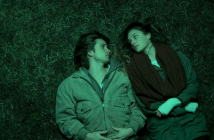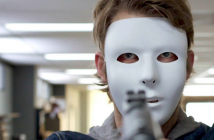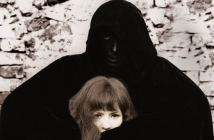A Million Ways to Die in the West (2014)
Cast: Seth MacFarlane, Charlize Theron, Liam Neeson
Director: Seth MacFarlane
Country: USA
Genre: Comedy | Western
Official Site: Here
Editor’s Notes: A Million Ways to Die in the West is now open in wide theatrically release.
Seth MacFarland has pulled off a rare feat: a period comedy with contemporary humor styles and timing. It’s rare because the language doesn’t feel out of place in the west but it should. Other comedies that attempt this normally fail and not for a long time has anything really succeeded in transplanting sensibilities of today into the old west. MacFarland also succeeds in not only spoofing the western genre, but homaging countless western spoofs like those of Bob Hope, Buster Keaton and Mel Brooks.
Macfarland stars as Albert, a sheep farmer in 1882 New Mexico. We discover quickly that he’s a coward because he talks and negotiates his way out of a gunfight instead of shooting. This leads his girlfriend Louise (Amanda Seyfried) to dump him. He turns to his best friend Edward (Giovanni Ribisi) and his girlfriend Ruth (Sarah Silverman). Edward and Ruth have not slept together yet because they are Christians and are saving themselves for marriage, ignoring the fact that Ruth is a prostitute (there are many, many, many jokes that use that premise in the film). When asked by the madam (played by Family Guy castmember Alex Borstein) if he minds that his girlfriend is a whore he simply replies “My job sucks too.”
Seth MacFarland has pulled off a rare feat: a period comedy with contemporary humor styles and timing. It’s rare because the language doesn’t feel out of place in the west but it should.
While Albert is sulking over Louise and discovering that she is now involved with Foy (Neil Patrick Harris), the wealthy owner of a mustacherie (a store devoted to the care and upkeep of mustaches) a beautiful woman named Anna (Charlize Theron) arrives in town with her ‘brother’ Lewis (Evan Jones) (we know from the opening sequence that she is in fact the wife of notorious outlaw Clinch played by Liam Neeson, who seems to be showing up everywhere this year, and Lewis is a member of his gang and not her brother. Clinch will be rolling through town in 12 days to pick them up, after the heat from their last robbery blows over. We know this early on, but no one else learns it until the final act of the film). Anna and Albert become friendly after he saves her life during a bar fight. She decides to help him get Louise back and in the process they fall in love.
That’s really the whole story. Of course things happen in between and after but that’s the gist of the story. It’s not really the most important part of the film, which is why its threadbare nature wasn’t really a problem. The jokes are king here and there is a steady stream of them, both verbal and visual. There is the afore mentioned running gag between Edward and Ruth, but the main theme is how horrible the west is and how easy it is to die out there in that time. Albert goes on countless diatribes concerning what is out there that can and will kill you if given the opportunity. Most of the time these are funny, except when one follows another and becomes tedious, which only happens once or twice.
MacFarland as a director is less impressive (if that’s the word to use) than he is as a writer. While the film isn’t poorly directed, it’s not exactly well directed either (just like his first directorial effort Ted in 2012). His framing is functional and his timing is good, but his editing is below par. There are some shots that take place in the same scene and the same space that feel apart from each other, like the bar fight where there is a massive (and well-staged) fight and he cuts to Albert and Edward in a pre-rehearsed fake fight, calling out that they are involved in their own fight and there is no need to come over to them. It’s funny, but the shots of Albert and Edward look like they were shot separately from the choreographed fight and inserted for the joke, which given the scale of the fight is almost certainly what was done. It’s just sloppy stuff like that which keeps this from elevating itself beyond simply a clever film. What he does do wonderfully as a director is get some really genuine and funny performances out of each of his actors. He’s able to bring out qualities in people who aren’t normally known for comedy, like Theron, that make them endearing. He manages to get reasonably naturalistic performances out of people in unnatural surroundings and situations, except NPH whom he has doing an over-the-top kind of villain (distinctively in the vein of Snidley Whiplash from the Dudley Do-Right cartoon, even copping the mustache).
The music stands out as a highlight of the film, not because it’s a great score but because it harkens back to not only the western themes of the 1950s but also western spoof music.
The music stands out as a highlight of the film, not because it’s a great score but because it harkens back to not only the western themes of the 1950s but also western spoof music. The opening theme over credits that look lifted straight from Blazing Saddles (1974) and made me yearn for a A Million Ways to Die in the West song like the Blazing Saddles song (which itself was a spoof of High Noon’s (1952) classic song sung by Tex Ritter). I was rewarded with said song over the end credits, but I wished it had opened the film.
The writing is where the film ultimately shines, co-written by director/star MacFarland and two of his Family Guy (and Ted) co-writers Alec Sulkin and Wellesley Wild. The verbal interplay between most of the characters is fantastic and the jokes hit more than they miss. They did their homework too, pulling references from lots of old western comedies like The Paleface/Son of Paleface films Bob Hope did, The Paleface that Buster Keaton did and of course Mel Brooks’ Blazing Saddles. To that end, this film is less a spoof of the western genre and more of an homage in general to the western comedy. MacFarland isn’t looking to lambast conventions, he’s using them to tell his own story.
A Million Ways to Die in the West won’t be a classic and it very likely won’t be remembered for a long time, but that’s not to say it isn’t good. I and the audience I saw the film with laughed all the way through the picture, and that means the film achieves what it set out to do: entertain. It’s not great art, it’s just a great time. Oh, and be sure to stay for an after credits sequence that may very well be the best gag in the entire film.
A Million Ways to Die in the West won’t be a classic and it very likely won’t be remembered for a long time, but that’s not to say it isn’t good. I and the audience I saw the film with laughed all the way through the picture, and that means the film achieves what it set out to do: entertain. It’s not great art, it’s just a great time.




